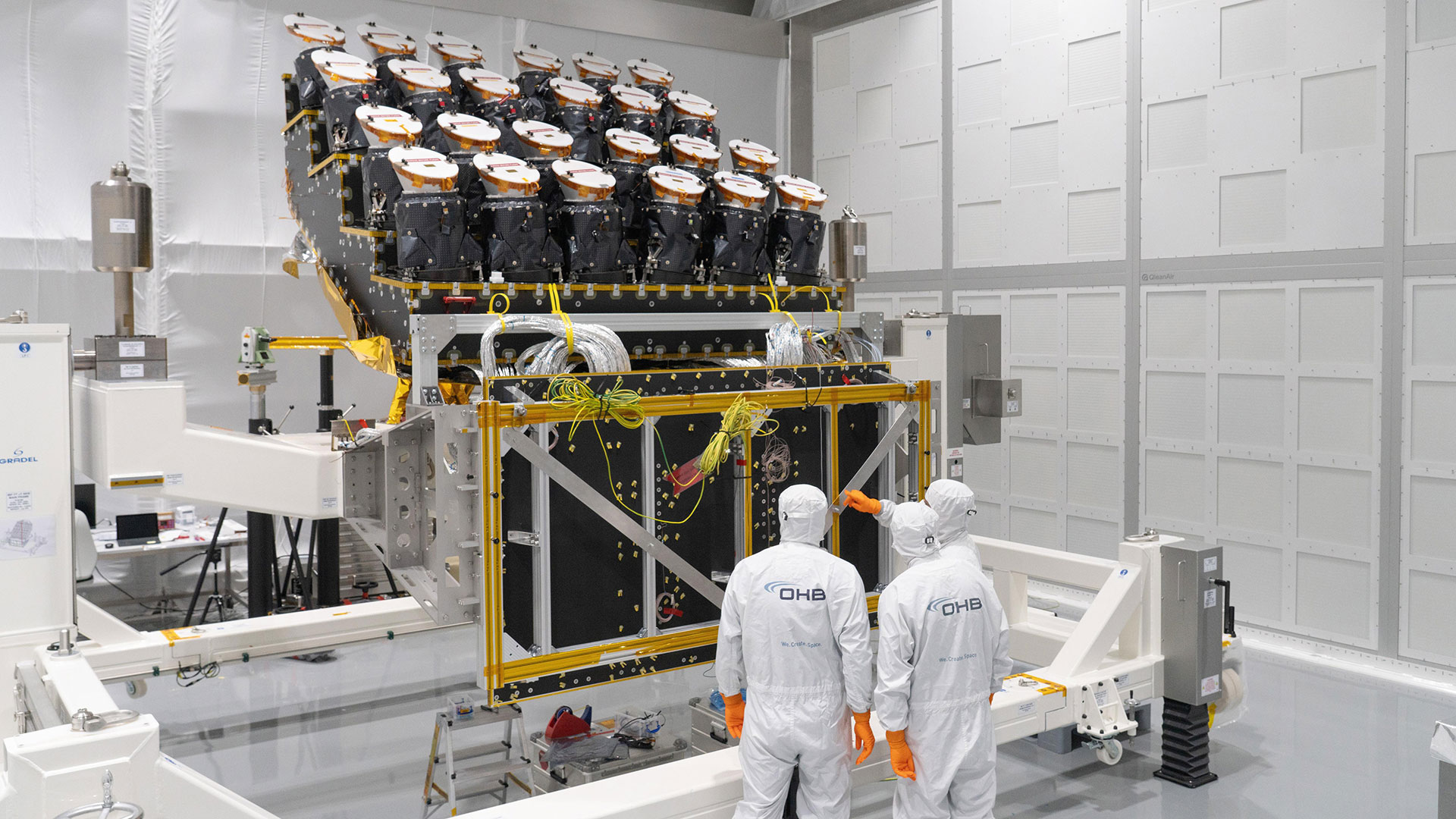The European Space Agency (ESA) spacecraft now has 24 of its 26 cameras installed, which once launched will be used to hunt for terrestrial planets.
When you purchase through links on our site, we may earn an affiliate commission. Here’s how it works.

The European Space Agency (ESA) is two dozen steps closer to launching Plato, a spacecraft that will search for terrestrial planets outside of our solar system, after the installation of 24 of its 26 cameras.
What is it?
ESA’s Plato, or PLAnetary Transits and Oscillations of stars, mission will use its 26 cameras simultaneously to study terrestrial exoplanets in orbits up to the habitable zone of sun-like stars. The mission will measure the sizes of these worlds and discover exomoons and rings around them. Plato will also characterize the planets’ host stars by studying tiny light variations in the starlight it receives.
As pictured here, the work to give Plato its sensitive eyes is nearing completion. Twenty-four of the 26 cameras have been installed on the spacecraft’s optical bench, the structure that keeps all cameras firmly pointed in the right direction. Two more “fast” cameras will be installed in the coming weeks.
“This activity is one of the most critical in building the satellite. The cameras are delicate elements that must be attached to the spacecraft’s supporting structure with great accuracy, to ensure that they are very precisely aligned,” said Thomas Walloschek, ESA’s Plato project manager, in a statement.
Also read: The moon is getting a GPS-like navigation system
Source: Robert Z. Pearlman – Space.com


